Japanese-Portuguese Jesuit Carved Ivory Figure of the Crucified Christ
A Fine Japanese-Portuguese Jesuit Carved Ivory Figure of the Crucified Christ With high forehead closed almond-shaped large eyes with highly marked lids and thin elongated slits the open pouty mouth with tight lips and manicured moustache
Smooth silky creamy patina
Traces of red and black polychrome
An old printed paper label to reverse depicting an Imperial Eagle holding a Heraldic Shield with ink inventory no. ‘C/306’
Late 16th Century – Early 17th Century
Size: 25cm high, 24.5cm wide - 9¾ ins high, 9½ ins wide / 31cm high - 12¼ ins high (with base)
cf: A similar example in the Asian Civilisations Museum Singapore 2012.00383
Smooth silky creamy patina
Traces of red and black polychrome
An old printed paper label to reverse depicting an Imperial Eagle holding a Heraldic Shield with ink inventory no. ‘C/306’
Late 16th Century – Early 17th Century
Size: 25cm high, 24.5cm wide - 9¾ ins high, 9½ ins wide / 31cm high - 12¼ ins high (with base)
cf: A similar example in the Asian Civilisations Museum Singapore 2012.00383
A Fine Japanese-Portuguese Jesuit Carved Ivory Figure of the Crucified Christ With high forehead closed almond-shaped large eyes with highly marked lids and thin elongated slits the open pouty mouth with tight lips and manicured moustache
Smooth silky creamy patina
Traces of red and black polychrome
An old printed paper label to reverse depicting an Imperial Eagle holding a Heraldic Shield with ink inventory no. ‘C/306’
Late 16th Century – Early 17th Century
Size: 25cm high, 24.5cm wide - 9¾ ins high, 9½ ins wide / 31cm high - 12¼ ins high (with base)
Smooth silky creamy patina
Traces of red and black polychrome
An old printed paper label to reverse depicting an Imperial Eagle holding a Heraldic Shield with ink inventory no. ‘C/306’
Late 16th Century – Early 17th Century
Size: 25cm high, 24.5cm wide - 9¾ ins high, 9½ ins wide / 31cm high - 12¼ ins high (with base)
East Asian religious ivory carvings represent one of the most extraordinary artistic products of the cross-cultural interaction between the European Catholic powers in Asia and their Japanese and Chinese trading partners. They were first manufactured by non-Christian Japanese near Nagasaki, the Jesuit missionary base in Japan, and by unconverted Chinese craftsmen working in Chinese territory.
Nagasaki was the site of the most flourishing Jesuit arts workshop in Asia. The Japan mission was founded by Francis Xavier who reached Kagoshima in 1549 with paintings and other devotional objects which were used as aids to conversion. The Jesuits achieved only modest success on the main island of Honshu, but in Kyushu the local war lords ‘Daimyōs’ accepted Christianity and with the approval of the Shogun Oda Nobunaga by 1593 had successfully converted over 215,000 Japanese. The Jesuits organised these converts into lay confraternity groups who could practice the Catholic faith where there were insufficient numbers of priests, thereby laying the foundations for a continuing Christian tradition.
By 1580 the Jesuits had founded colleges in Japan under Papal patronage that taught both converts and the sons of prominent non-Christian families. In 1583 an Italian Neapolitan lay brother Giovanni Niccolo (1563 - 1626) founded a Jesuit art school. This was referred to as a ‘Seminary of Painters’, but incorporated arts and craft workshops like those that were begun in Latin America. In 1614 Christianity was prohibited by the Tokugawa government and the Seminary of Painters and all of the Japanese Jesuit art school moved to Portuguese Macau. Production continued with many of the ivories after this date carved by Chinese as well as Japanese immigrant converts. Many of the religious ivories and paintings were produced for Portuguese colonial markets, but some were intended for the newly converted Philippines and Spanish America. These fine works of Christian art are one of the world's first testaments to the Asian ability to adopt western styles in the name of trade.
Nagasaki was the site of the most flourishing Jesuit arts workshop in Asia. The Japan mission was founded by Francis Xavier who reached Kagoshima in 1549 with paintings and other devotional objects which were used as aids to conversion. The Jesuits achieved only modest success on the main island of Honshu, but in Kyushu the local war lords ‘Daimyōs’ accepted Christianity and with the approval of the Shogun Oda Nobunaga by 1593 had successfully converted over 215,000 Japanese. The Jesuits organised these converts into lay confraternity groups who could practice the Catholic faith where there were insufficient numbers of priests, thereby laying the foundations for a continuing Christian tradition.
By 1580 the Jesuits had founded colleges in Japan under Papal patronage that taught both converts and the sons of prominent non-Christian families. In 1583 an Italian Neapolitan lay brother Giovanni Niccolo (1563 - 1626) founded a Jesuit art school. This was referred to as a ‘Seminary of Painters’, but incorporated arts and craft workshops like those that were begun in Latin America. In 1614 Christianity was prohibited by the Tokugawa government and the Seminary of Painters and all of the Japanese Jesuit art school moved to Portuguese Macau. Production continued with many of the ivories after this date carved by Chinese as well as Japanese immigrant converts. Many of the religious ivories and paintings were produced for Portuguese colonial markets, but some were intended for the newly converted Philippines and Spanish America. These fine works of Christian art are one of the world's first testaments to the Asian ability to adopt western styles in the name of trade.
cf: A similar example in the Asian Civilisations Museum Singapore 2012.00383
Japanese-Portuguese Jesuit Carved Ivory Figure of the Crucified Christ
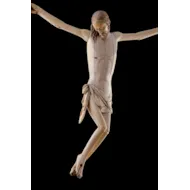
SOLD
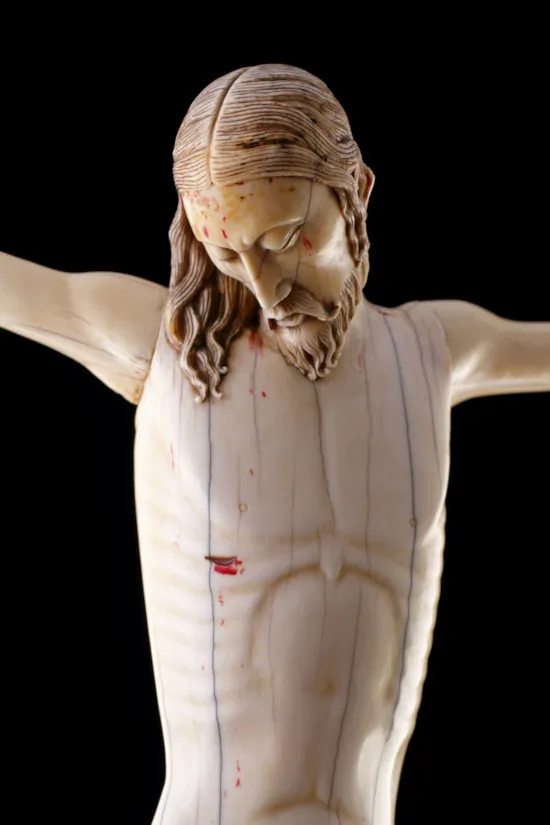
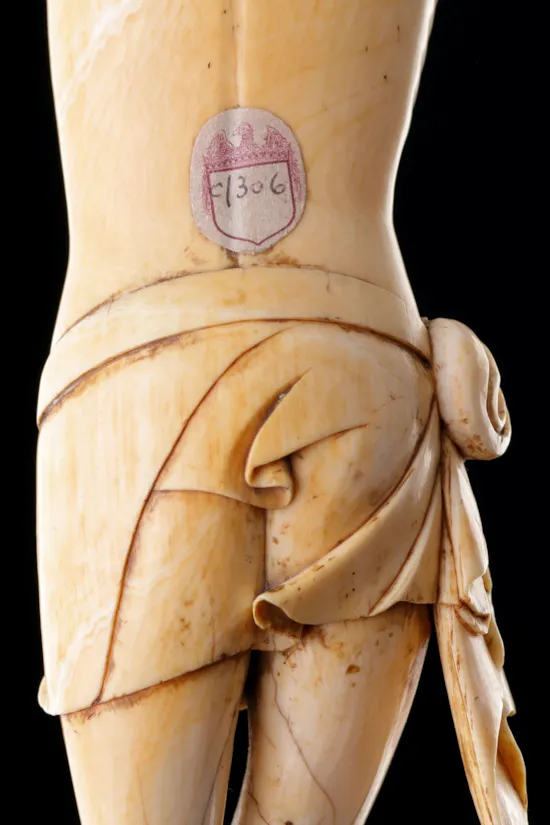
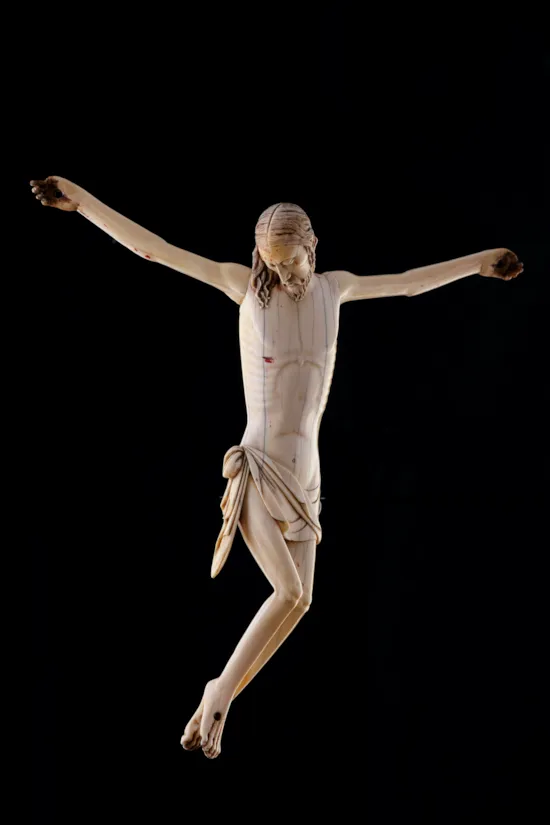
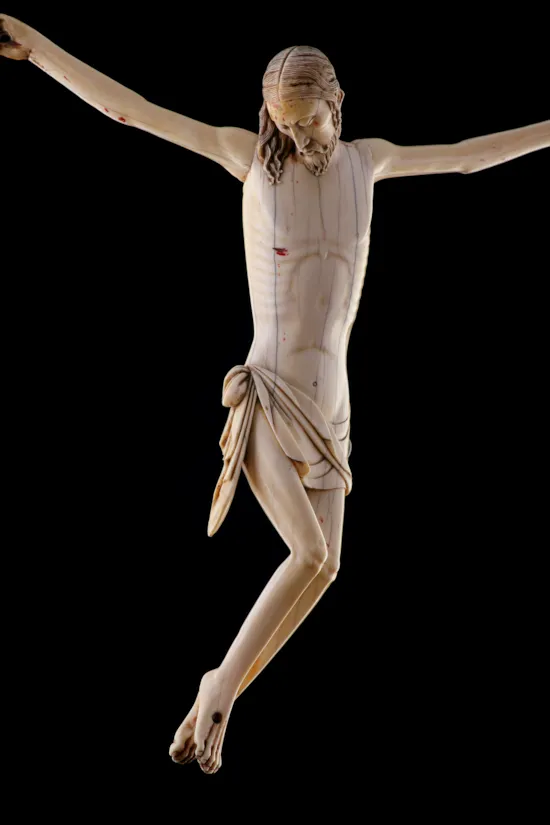
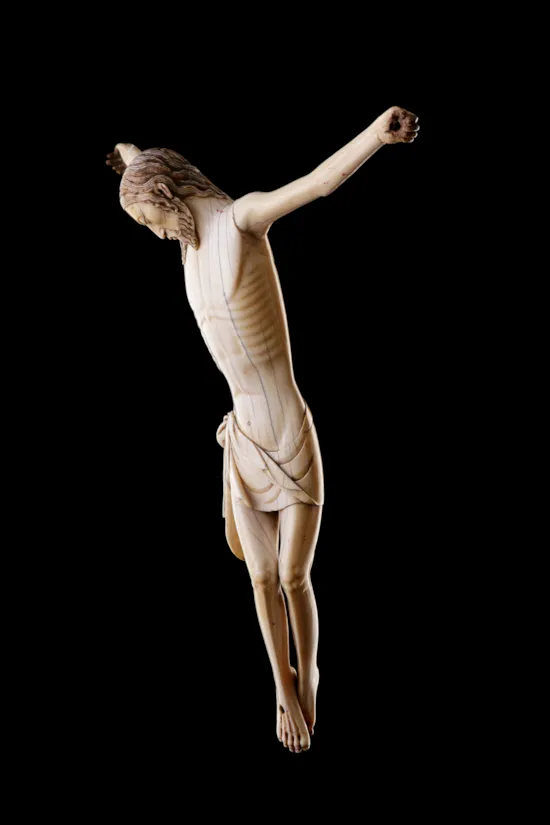
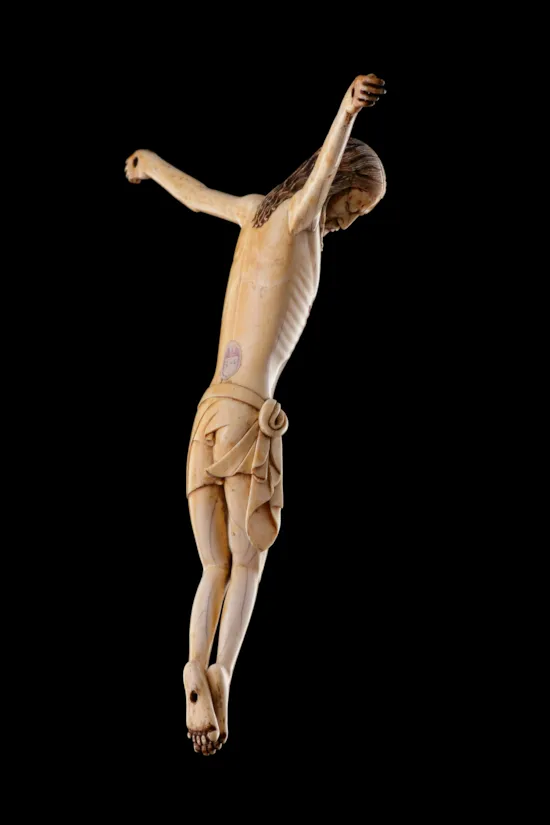
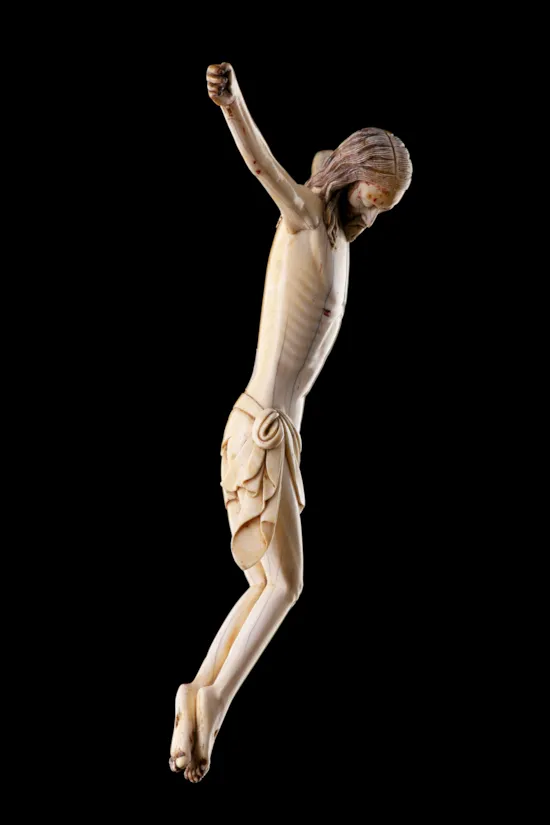
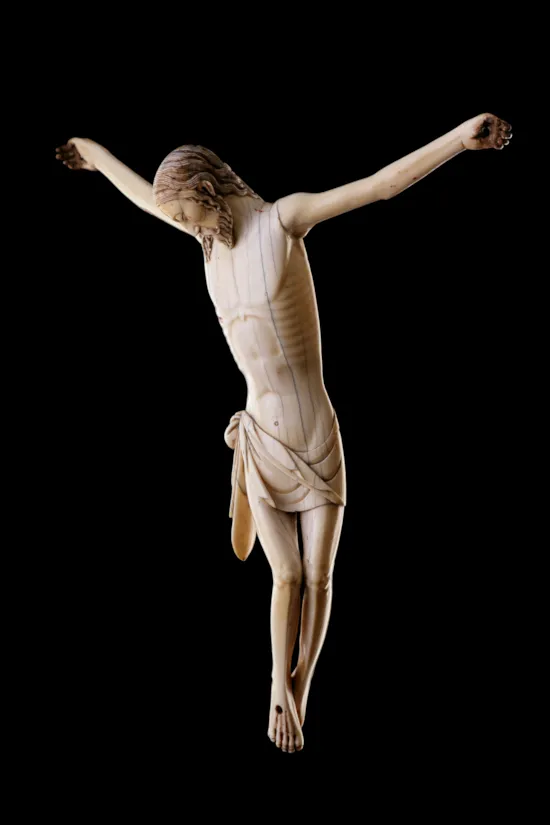
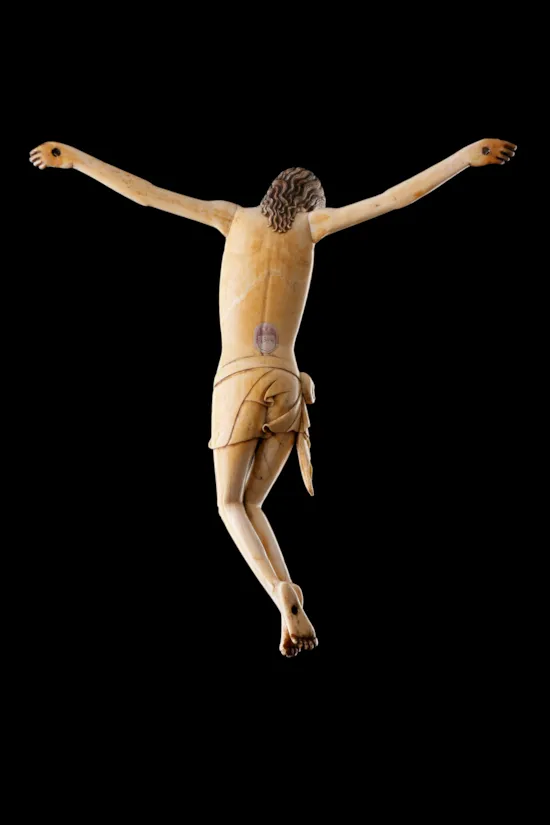
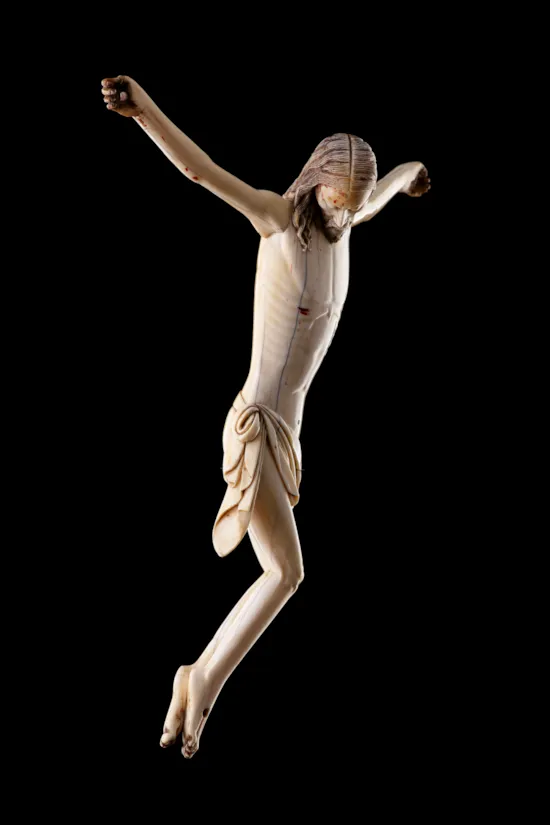
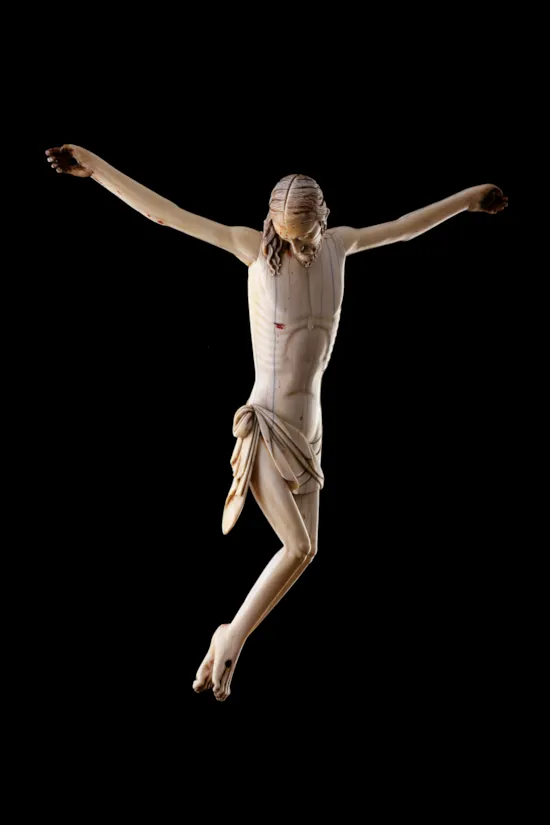
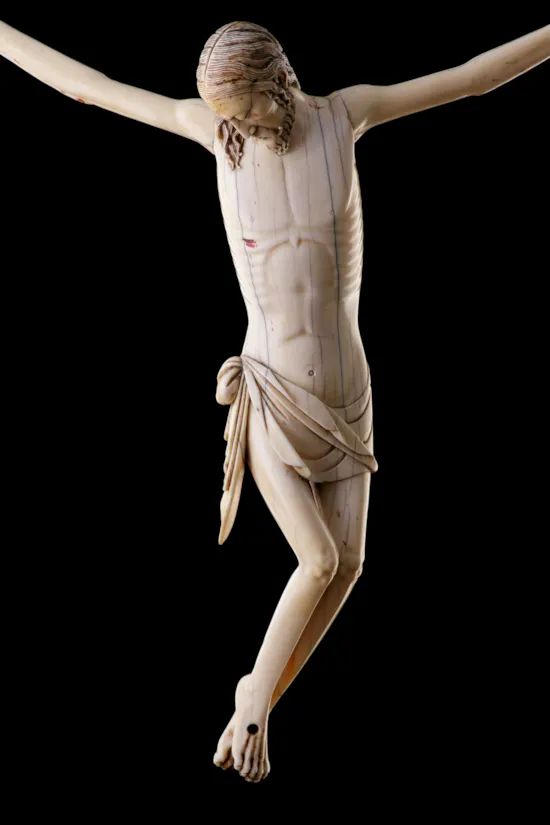
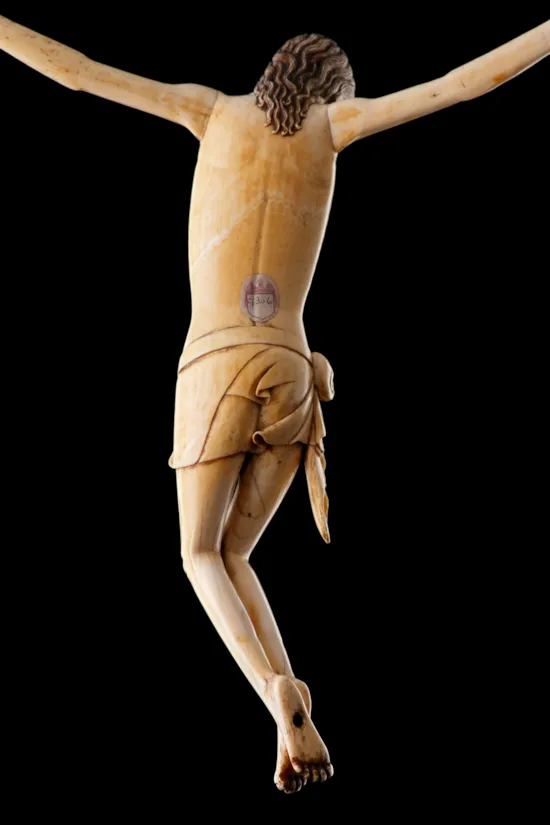
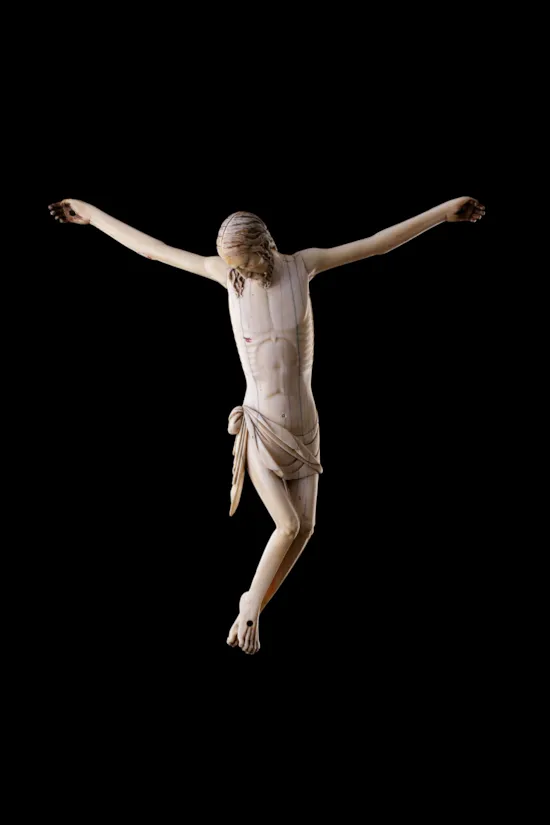














YOU MAY ALSO LIKE

